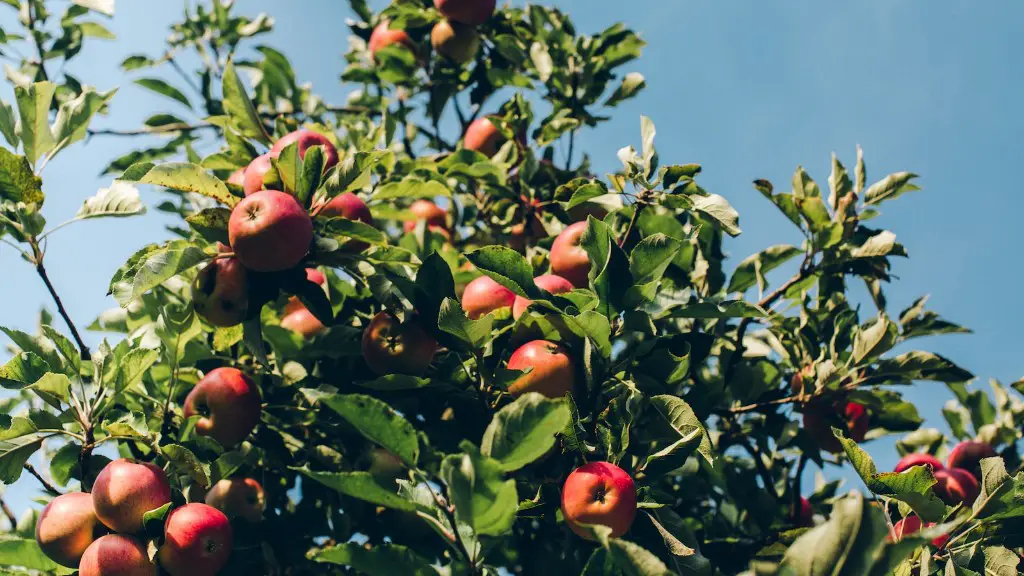Lemon trees are among the most common and beloved citrus trees worldwide, and many people want to grow them in their gardens. But, how long does it take for a lemon tree to bear fruit? It’s a question most gardeners ask and thankfully, the answer isn’t as hard as one might think.
When properly cared for, a lemon tree can bear fruit in as little as 2 years. There are a few hurdles one needs to jump through in order to get the best results. Firstly, when purchasing the tree, make sure it is healthy and disease free. This is the most important step, as a sick tree isn’t likely to yield fruit.
Then, make sure the soil in which the tree is planted is well draining, moist, and rich in nutrients. The tree’s pH level also needs to be monitored as too low or too high pH levels can stop the tree from bearing fruit.
Next, one must make sure the tree gets enough sunlight and proper water. Lemon trees love the sun so making sure they’re getting at least 8-10 hours of direct sunlight is key. The tree must be watered regularly when the soil dries out but needs to be protected from over-watering.
Finally, lemon trees need to be adequately fertilized. Fertilizing at least once a month is recommended for optimal fruiting. Also, adding compost to the soil in the fall helps give the lemon tree the nutrients it needs to bear healthy fruit.
How to Prune a Lemon Tree?
When caring for a lemon tree, one of the most important aspects to consider is pruning. Pruning is a crucial component as it helps to shape and direct the growth of the tree. To begin pruning, one must cut back dead and diseased branches right away. It’s also a good idea to prune off suckers and water spouts (shoots popping up near the main trunk) as these can take away nutrients from the lemon tree.
To ensure a well-formed tree, trim back branches that are leaning too far outward or growing too wide apart. But, don’t prune too much as this can weaken the tree. It’s also a good idea to thin out leaves from the center to allow for more airflow and better light distribution.
Finally, lightly fertilize the tree after pruning as this helps to promote new growth. Pruning a lemon tree takes some skill and patience but if done correctly, it can greatly improve the health and improve the fruit yield.
When is the Best Time to Plant a Lemon Tree?
If you’re thinking about planting a lemon tree in your garden, it’s important to know when the best time to do so is. Generally, the best time to plant a lemon tree is in the late spring or early summer as this is when temperatures are mild and the environment is fertile.
When planting a lemon tree, it’s important to make sure there is enough room, as they can grow up to 20 feet tall. The tree also needs to be in a spot where it gets at least 6-8 hours of direct sunlight because it needs the sun to remain healthy and bear fruit.
When you finally have the tree planted, it’s important to make sure to water it regularly. The soil should be kept moist, not wet, and the tree needs to be pruned every year to help it grow. Lemon trees may take some time to bear fruit, but with patience and proper care, you’ll be able to enjoy the sweet refreshment of home-grown lemons in no time.
What Types of Lemons are Available?
Although there are many different varieties of lemons, the most popular is the Lisbon and Eureka lemon. Lisbon lemons, also known as Lisbon Lemonade lemons, are larger, have smoother skin, and bear fruit early in the season. These lemons can weigh up to three times more than other varieties and are great for juicing.
Eureka lemons, on the other hand, are smaller, more acidic, and have wrinkly skin. But, these lemons are great for home-made lemonade and can also be preserved for later use. Other popular varieties include Meyer lemons, Tahiti lemons, and Ponderosa lemons. Each variety is unique in flavor, size, and yield so it’s important to explore and find the one that works best for you.
How to Store Lemons and Other Citrus Fruits?
Most citrus fruits, including lemons, need to be stored in a cool place away from direct sunlight. Lemons can last up to 4 weeks in the refrigerator, but they should not be stored in plastic. Fruits like lemons and oranges should be placed in a paper bag with a few holes in it so they can continue to “breathe” and stay fresh.
It’s also a good idea to check the fruits often for any rot or mold. If any of the fruit is past its prime, it should be removed from the bag to avoid spoiling the whole batch. To freeze lemons, simply zest them and then Freeze the zest. The zest can then be used for months to come.
Lemons may also be frozen whole. Simply wash the lemons, slice them thinly and then place in a single layer on a parchment lined baking sheet. Once frozen, transfer the slices to a freezer safe bag and they’ll be good for up to 8 months.
How to Harvest Lemons?
Harvesting lemons is an easy but important process. It’s important to harvest lemons at the right time as over ripe lemons can be bitter and won’t store well. To know when your lemons are ripe, pick them off the tree and check their color, size, and smell.
If the color is bright yellow, the size is larger than golf ball, and the smell is tart and intense, the lemons are ready to be picked. To pick them, simply give a gentle twist and the lemon should detach itself from the tree.
When storing lemons, make sure to keep them in the fridge or a cold area. It’s best to store them at room temperature, away from direct sunlight, as prolonged exposure to heat will cause the lemons to spoil faster.
How to Make Lemonade?
Once you’ve harvested a bunch of juicy lemons from your lemon tree, the best way to make use of them is to turn them into a refreshing glass of lemonade. To make lemonade at home, you’ll need a few simple ingredients.
Start by squeezing the lemons to have the desired amount of juice. Then, mix the lemon juice with some water and add a bit of sugar and a pinch of salt. Stir it all together and refrigerate for at least 30 minutes for the flavors to combine.
Once the lemonade has cooled, pour it over some ice and enjoy! Add some mint leaves or other fruits to make it more interesting. You can also add some soda water and a bit of lime juice for a more fizzy and vibrant lemonade.
How to Use Lemon Peels?
Once you’re done juicing or eating lemons, don’t throw away the peels! Lemon peels are packed with vitamins, minerals, and antioxidants and can be used in a variety of ways.
The peels can be used as a spice when added to dishes like curries or desserts, or simply added to desserts for a zesty twist. Lemon peels can also be added to soups or salads for an extra zing.
They can also be dried and stored for later use. Lemon peels can be infused with oils to make an aromatic oil or added to a diffuser to freshen up the air. They can even be mixed with vinegar to make a homemade cleaning solution.
Lemon peels can also be used for beauty care. They can be mixed with yogurt to make a face mask for a glowy complexion, or with honey and sugar for a nourishing body scrub. The possibilities are endless!




